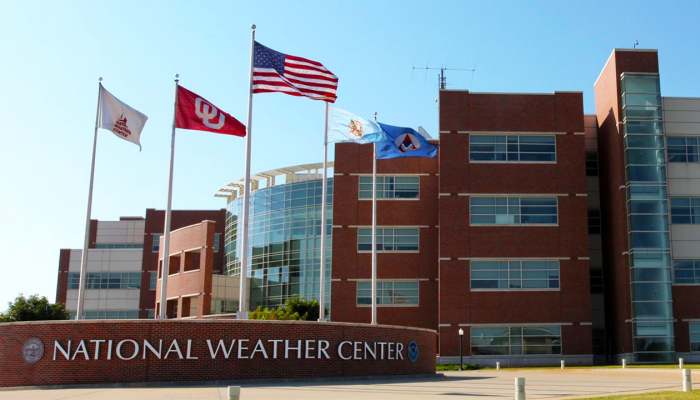National Weather Center

Visitor Information
The National Weather Center (NWC) is comprised of multiple agencies from the federal, state and local levels, combined with academic entities and research and development partners. The center hosted six exhibits during the year-long Galileo's World exhibition, as well as an opening reception and several lectures.
Exhibits
Astronomy, optics, chemistry and the Earth sciences are just a few of the disciplines once studied in close association with meteorology. Throughout history, meteorologists have adopted innovative methodologies to address emerging research problems that require multidisciplinary expertise.
Galileo’s experiments and innovative scientific instruments opened up new worlds of discovery. His thermoscope facilitated quantitative comparison of temperatures over time and under varying circumstances.
The Kepler space telescope launched in March, 2009, to search for terrestrial planets around other suns. One month later, five Jupiter-like planets had been discovered. As of 2015, the Kepler telescope has discovered a total of 1,000 confirmed planets.
Aviators, astronauts, scientists and engineers from Oklahoma have participated in aerospace activities throughout the history of the state. This special exhibit explores how the pioneering spirit that brought space scientists’ to Oklahoma also inspired them to explore the new frontier of space.
Science On a Sphere® (SOS) is a room sized, global display system that uses computers and video projectors to display planetary data onto a six foot diameter sphere, analogous to a giant animated globe.
With his telescope, Galileo discovered mountains on the Moon, four satellites of Jupiter, the phases of Venus, dark spots tracking across the face of the Sun, the enigmatic “ears” of Saturn, and countless stars that were invisible to the unaided eye.
Location Map














